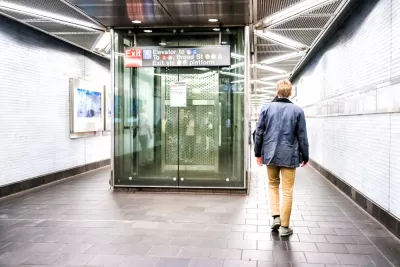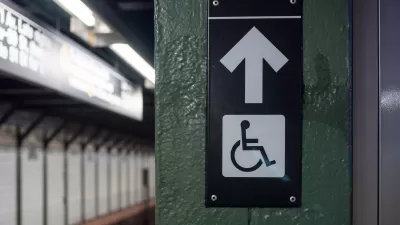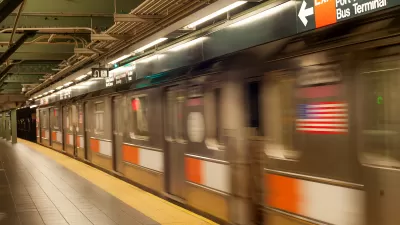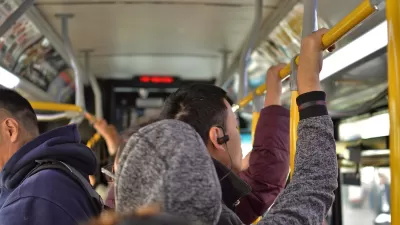The MTA announced plans for new or improved elevators at almost two dozen stations as part of its pledge to make more of its stations fully accessible.

New York’s Metropolitan Transportation Authority (MTA) announced plans to improve accessibility by installing or replacing elevators at 23 stations, acting on its pledge earlier this year to make 95 percent of its stations fully accessible by 2055 in the wake of multiple lawsuits.
As Audrey Wachs reports in The Architect’s Newspaper, “Varied station designs across the aging system make upgrades challenging, but advocates have long contended that the MTA can and should be doing more to improve accessibility: The city has one of the lowest percentages of accessible stations of any major transit system worldwide.”
The agency is entering into a public-private partnership, known as P3, to fund the work on eight stations. “Under the P3 model, the developer will partially finance the project, with equity repaid only if the elevators and other improvements are built and maintained to the MTA’s standards.”
As advocates repeatedly point out, “Accessible transit doesn’t just benefit people who use mobility aids: they also benefits seniors, caregivers lugging strollers—there are 553,000 young children in the city—visitors with heavy suitcases, and people who are just plain tired.” Moreover, accessibility includes more than just elevators and ramps. One lawsuit filed against the MTA calls on the agency to close the vertical and horizontal gaps that can pose a danger to people with mobility or visual impairments.
FULL STORY: MTA announces much-needed elevator upgrades at multiple subway and train stations

Alabama: Trump Terminates Settlements for Black Communities Harmed By Raw Sewage
Trump deemed the landmark civil rights agreement “illegal DEI and environmental justice policy.”

Planetizen Federal Action Tracker
A weekly monitor of how Trump’s orders and actions are impacting planners and planning in America.

The 120 Year Old Tiny Home Villages That Sheltered San Francisco’s Earthquake Refugees
More than a century ago, San Francisco mobilized to house thousands of residents displaced by the 1906 earthquake. Could their strategy offer a model for the present?

Ken Jennings Launches Transit Web Series
The Jeopardy champ wants you to ride public transit.

BLM To Rescind Public Lands Rule
The change will downgrade conservation, once again putting federal land at risk for mining and other extractive uses.

Indy Neighborhood Group Builds Temporary Multi-Use Path
Community members, aided in part by funding from the city, repurposed a vehicle lane to create a protected bike and pedestrian path for the summer season.
Urban Design for Planners 1: Software Tools
This six-course series explores essential urban design concepts using open source software and equips planners with the tools they need to participate fully in the urban design process.
Planning for Universal Design
Learn the tools for implementing Universal Design in planning regulations.
Clanton & Associates, Inc.
Jessamine County Fiscal Court
Institute for Housing and Urban Development Studies (IHS)
City of Grandview
Harvard GSD Executive Education
Toledo-Lucas County Plan Commissions
Salt Lake City
NYU Wagner Graduate School of Public Service





























